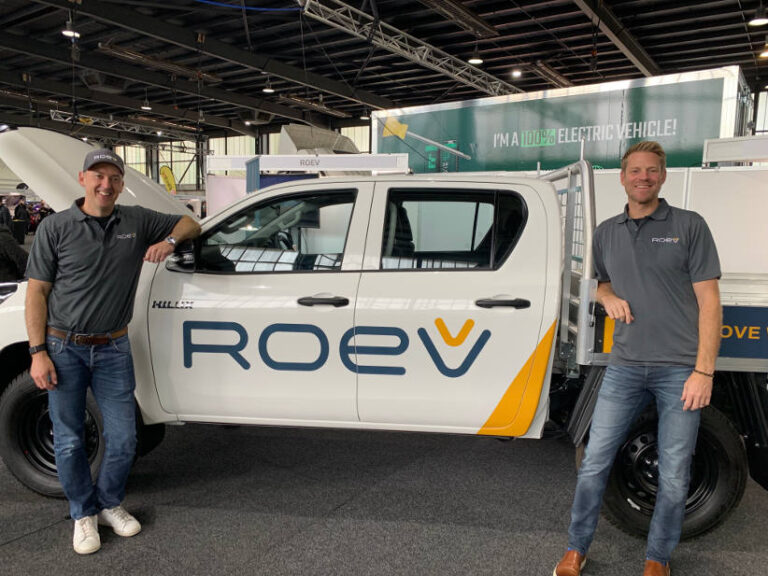Fleet Managers now have an opportunity to further reduce their fleet emissions by purchasing electric utes. Roev, the latest entrant to the EV landscape, is working to deliver a solution to fleets that will accelerate the transition to zero emission fleets. But the Roev Ute will be more than that – for starters it’s electric, and with vehicle to grid capability, it will power your tools, your home, and your workplace.
Roev is a company innovating at the intersection of electric vehicles and renewable energy. With plans to kickstart a local EV industry, Roev is working to re-establish automotive manufacturing in Australia with a locally-built Roev EV Ute.
“We have the passion, vision and know-how to restore manufacturing in Australia” says Roev CEO and Co-Founder, Noah Wasmer.
“We’ve already invested heavily in understanding the long-term business case for manufacturing at scale in Australia. We have a once-in-a-lifetime opportunity to make this happen and drive real change in this country.”
Wasmer and co-founder Paul Slade, met as senior executives at Atlassian and share a vision to make a significant impact on climate change. The pair quickly identified increasing EV availability as the fastest path to meaningful climate change in Australia.
“Our mission is to sustainably remove millions of tons of CO2 emissions by accelerating transport electrification and renewable energy uptake,” said Slade.
While the long term vision is locally-built EV Utes, the Roev team are taking action today with an EV Fleet Program to convert current model diesel utes to electric. Roev are working with business and government fleets to convert their current model Toyota Hilux and Ford Rangers to electric vehicles.
Wasmer says there are a number of reasons Roev is starting with large fleets of utes. “The ute is the obvious choice because of the size of the market and the fact that there is no outlook at all for mainstream electric utes hitting our shores.” He adds that “they are also among the worst emitters of CO2 being almost 100% diesel and with high kilometers driven due to the nature of their use.”
The Roev team are starting with business and government fleets so that they can scale quickly and leverage their V2G technology and energy solutions with partners.
“EV utes are a great start, but the biggest impact will come from running them efficiently with renewable energy and the ability to store and redistribute that energy from their batteries,” explains Wasmer.
It’s for this reason that Wasmer refers to their Roev EV Utes as “power walls on wheels”.
Slade says that by 2035 there will be enough storage in the country’s EV fleet to cover the average daily energy consumption of 75% of Aussie homes. According to Slade, Roev aims to demonstrate this through their EV Fleet Program and convince the government, businesses and everyday drivers that you can power the country with renewable energy stored in EV’s.
“We see the future of vehicle depots as DC micro-grids, and by testing our V2G technology and EV management software, we can show that it can be done without impacting the driving performance or range requirements for electric vehicles,” says Slide
It’s the start of an exciting journey for the team at Roev and they are currently looking for business, council and government fleets who are interested in electrifying their fleet. More information about Roev and their EV Fleet program can be found at Roev – Electrifying fleets across Australia.






